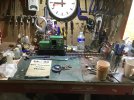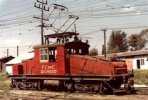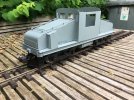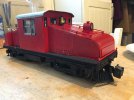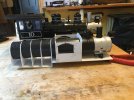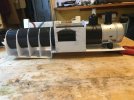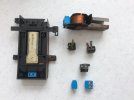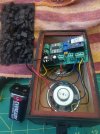3 minutes of fame
3d printing, electronics and trams
Work on the wooden bug boxes continues.
I cut in both 2mm and 3mm, and decided on the 2mm, as it looks to be a more realistic depth of panelling. 1mm might be even better, so I might well make a 3rd prototype! The 3mm version will become a grounded coach body, so nothing is wasted.

The rake looks quite good, and the difference between the wooden and 3D printed chassis is minimal.


The chassis have now been modified so that standard larger wheels can be used. I've designed this so that the part is reversible, meaning that if you have good ground clearance around the track, you can have the prototypical body height, or if like me, you have platforms that are closer to the track and would foul the bodies, you can increase ground clearance by about 6mm




The roofs for the the bug boxes are made using a 3D print roof truss. I need to slightly adjust the radius of the end panels, as it's about 2mm out currently. Not an issue if the roofs are fixed in place, but I make them removable, and the gap is more obvious.

Next on the agenda is some benches, along with some more detailing for the coaches.
I cut in both 2mm and 3mm, and decided on the 2mm, as it looks to be a more realistic depth of panelling. 1mm might be even better, so I might well make a 3rd prototype! The 3mm version will become a grounded coach body, so nothing is wasted.
The rake looks quite good, and the difference between the wooden and 3D printed chassis is minimal.
The chassis have now been modified so that standard larger wheels can be used. I've designed this so that the part is reversible, meaning that if you have good ground clearance around the track, you can have the prototypical body height, or if like me, you have platforms that are closer to the track and would foul the bodies, you can increase ground clearance by about 6mm
The roofs for the the bug boxes are made using a 3D print roof truss. I need to slightly adjust the radius of the end panels, as it's about 2mm out currently. Not an issue if the roofs are fixed in place, but I make them removable, and the gap is more obvious.
Next on the agenda is some benches, along with some more detailing for the coaches.

